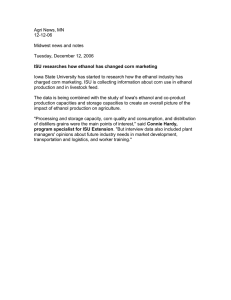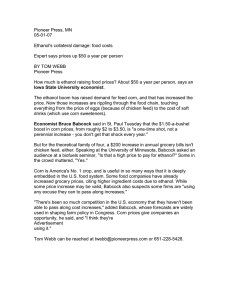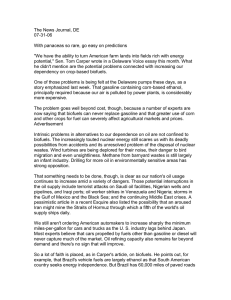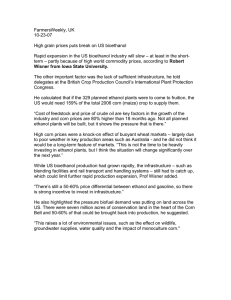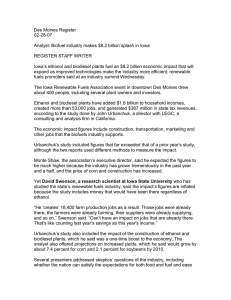Iowa Farmer Today 11-17-07 Conference looks at bioindustry past, future trends
advertisement
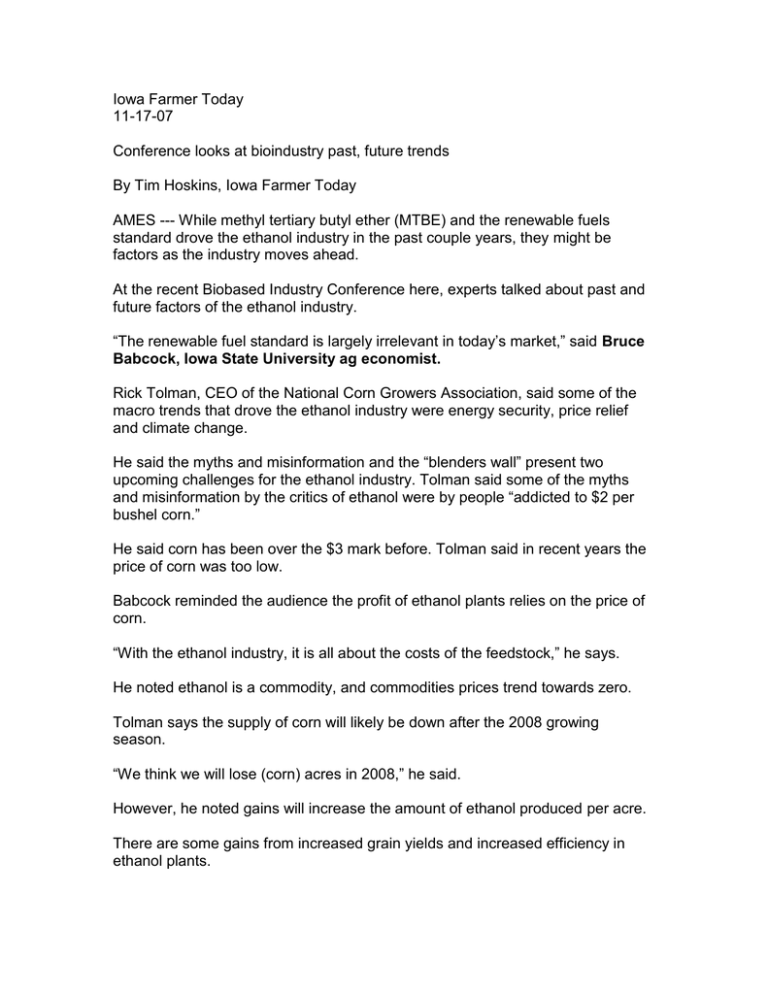
Iowa Farmer Today 11-17-07 Conference looks at bioindustry past, future trends By Tim Hoskins, Iowa Farmer Today AMES --- While methyl tertiary butyl ether (MTBE) and the renewable fuels standard drove the ethanol industry in the past couple years, they might be factors as the industry moves ahead. At the recent Biobased Industry Conference here, experts talked about past and future factors of the ethanol industry. “The renewable fuel standard is largely irrelevant in today’s market,” said Bruce Babcock, Iowa State University ag economist. Rick Tolman, CEO of the National Corn Growers Association, said some of the macro trends that drove the ethanol industry were energy security, price relief and climate change. He said the myths and misinformation and the “blenders wall” present two upcoming challenges for the ethanol industry. Tolman said some of the myths and misinformation by the critics of ethanol were by people “addicted to $2 per bushel corn.” He said corn has been over the $3 mark before. Tolman said in recent years the price of corn was too low. Babcock reminded the audience the profit of ethanol plants relies on the price of corn. “With the ethanol industry, it is all about the costs of the feedstock,” he says. He noted ethanol is a commodity, and commodities prices trend towards zero. Tolman says the supply of corn will likely be down after the 2008 growing season. “We think we will lose (corn) acres in 2008,” he said. However, he noted gains will increase the amount of ethanol produced per acre. There are some gains from increased grain yields and increased efficiency in ethanol plants. Tolman said a goal is to produce 15 billion bushels of corn to make 15 billion gallons of ethanol by 2015. However, other gains could be made from changing how corn is processed. Tolman also pushed for the development of cellousic ethanol. “The biggest producer of cellulose is corn,” he says. Tolman said there are some political reasons to get cellousic ethanol in production. “We need the political help,” he says. “We never said it (corn ethanol) is the silver bullet. It is one pellet in the silver shotgun.” Using ethanol and biofuels to combat global warming could occur in the future. However, there are some considerations relating ethanol to global warming. Nathanael Greene, who works for the Natural Resources Defense Council, said his group thinks biofuels would be half of the renewable fuels contribution to reduce greenhouse gas emissions. Overall, renewable fuels will be 20 percent of the overall picture to get 60-80 percent reduction of greenhouse gas emissions. That could translate into 55 billion to 116 billion gallons of biofuels. However, Babcock noted it is important to consider how to think about the contribution of greenhouse gases from biofuels. First, using ethanol, he said it depends how the ethanol is produced. For example, an ethanol plant that sells wet distiller grains would reduce greenhouse gas emissions by more than plants that sell dried distillers grains. Then, he said then it depends on what crop corn replaced. Babcock said planting corn instead of soybeans will reduce greenhouse gases. However, if corn is planted on CRP ground, it increases greenhouse gases. At the end of the discussion, participants talked about providing incentives for ethanol producers based on how much of a reduction of greenhouse gas emissions that could be tied to their ethanol or biofuels plant.

